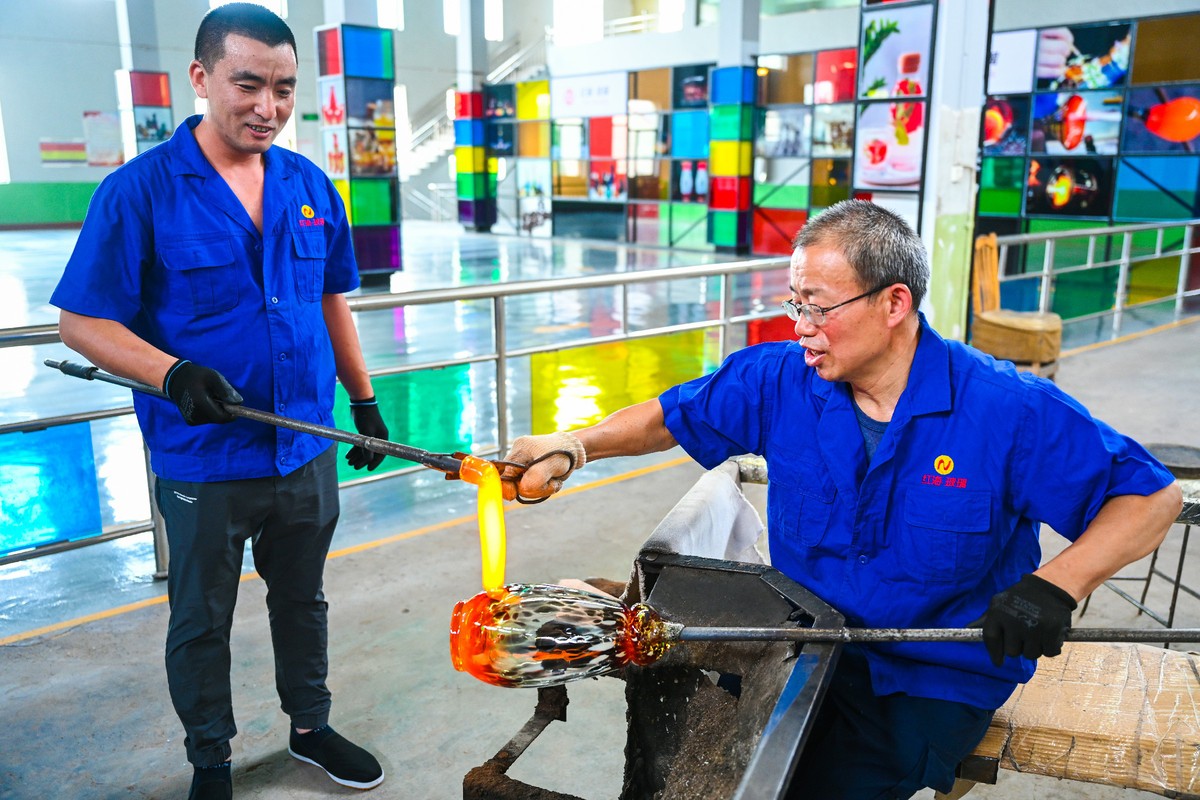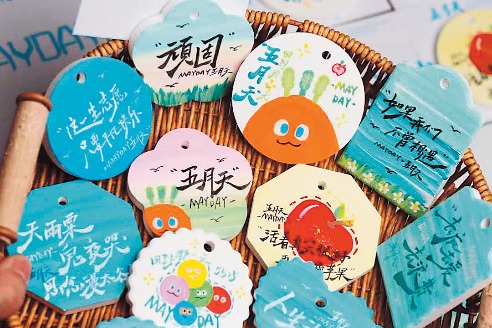Qixian's glassware heralds global presence


Traditional industry's success stems both from skilled craftsmanship and advancements in automated production
Three hundred years ago, a group of local merchants from North China's Shanxi province forged an ancient tea road — a daring quest that would span over 10,000 kilometers across the vast Eurasian continent. Their mission? To take the exquisite flavors of Chinese tea to the world. Unbeknownst to them, their footsteps also retraced the secrets of a foreign craft.
The intricate artistry of the glassware they brought back from distant lands found a fertile ground in Shanxi's Qixian county, where it took root, flourished and wove its own narrative that continues to unfold to this very day.
There are 53 glassware production companies in Qixian, making over 8,000 product varieties such as tea sets, candlesticks, vases and lamps, said Zhang Fushuan, director of the county's transformation and reform promotion center.
Last year, these manufacturers produced 250,000 metric tons of glassware products, valued at an estimated 2.3 billion yuan ($321.1 million).
Almost 70 percent of such products are exported to over 80 countries and regions, including the United States, Japan and South Korea, as well as economies involved in the Belt and Road Initiative, Zhang said.
The Qixian glassware industry's success stems from its workers' skilled craftsmanship, which has been passed down for decades, and advancements in automated production that help meet the market's increasing demands.
Within workshops of Qixian Dongyu Glassware Co Ltd where the glass furnace remains heated at a scorching 1,500 C, no molds are employed in the creation of distinctively shaped glassware, said Li Hu, head of the company.
Instead, the workers' experience and skills gained over the years are key, allowing them to precisely control the thickness and length during glassblowing, Li added.
The crucial first step is the gathering of the glass, as gathering too much of it will result in excessively thick and aesthetically unpleasing products, said Lyu Yujie, a technician at the company.
During the blowing process, workers must simultaneously blow and swiftly rotate the blowpipe, allowing the glass to take shape evenly, Lyu added.
Once the basic shape of the cup is formed, additional glass is gathered for the challenging process of stretching. As soon as the glass solution comes into contact with air, it cools rapidly. The glassblowers must continuously rotate the cup in one hand while stretching it with a pair of pliers, Lyu said.
Highly skilled workers can ensure that glassware does not remain in their hands for more than 10 seconds and are able to regulate the thickness and length range to within 0.2 millimeter, Lyu said.
Qixian produces 2 billion exquisite glassware pieces annually, or a 27 percent share of the global handblown glass industry.
Particularly noteworthy is the fact that Qixian's handblown highball glasses account for over 80 percent of the nation's such glassware exports, according to Zhang.
Thanks to its high quality and aesthetic appeal, Qixian's glassware products have made a mark at various international events such as the G20 Summit, the Belt and Road Forum for International Cooperation and the Qatar World Cup, Zhang added.
























